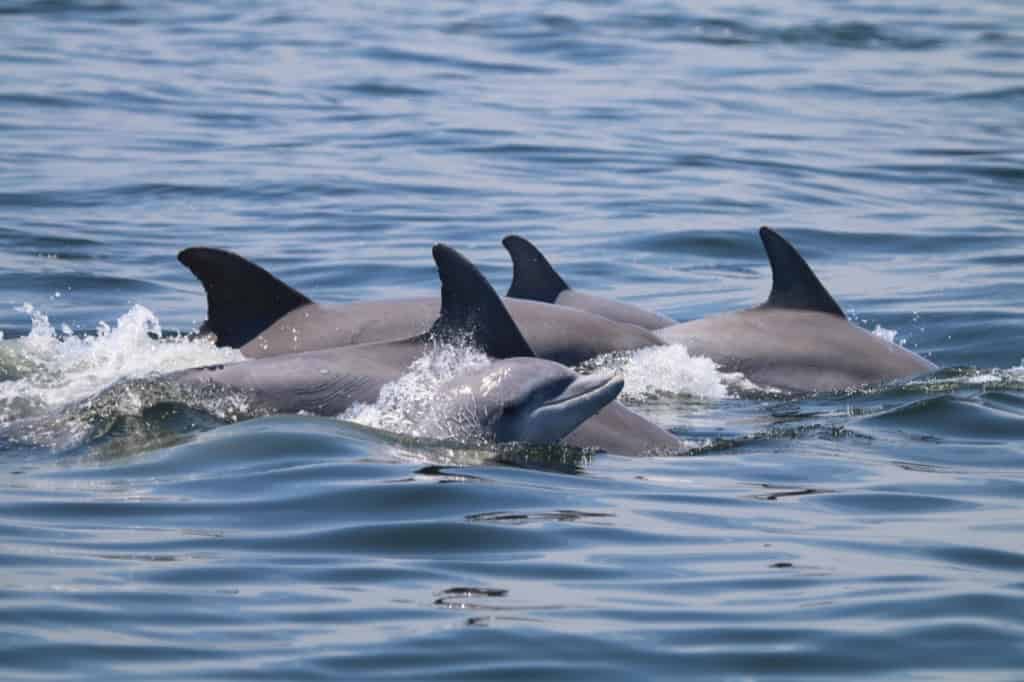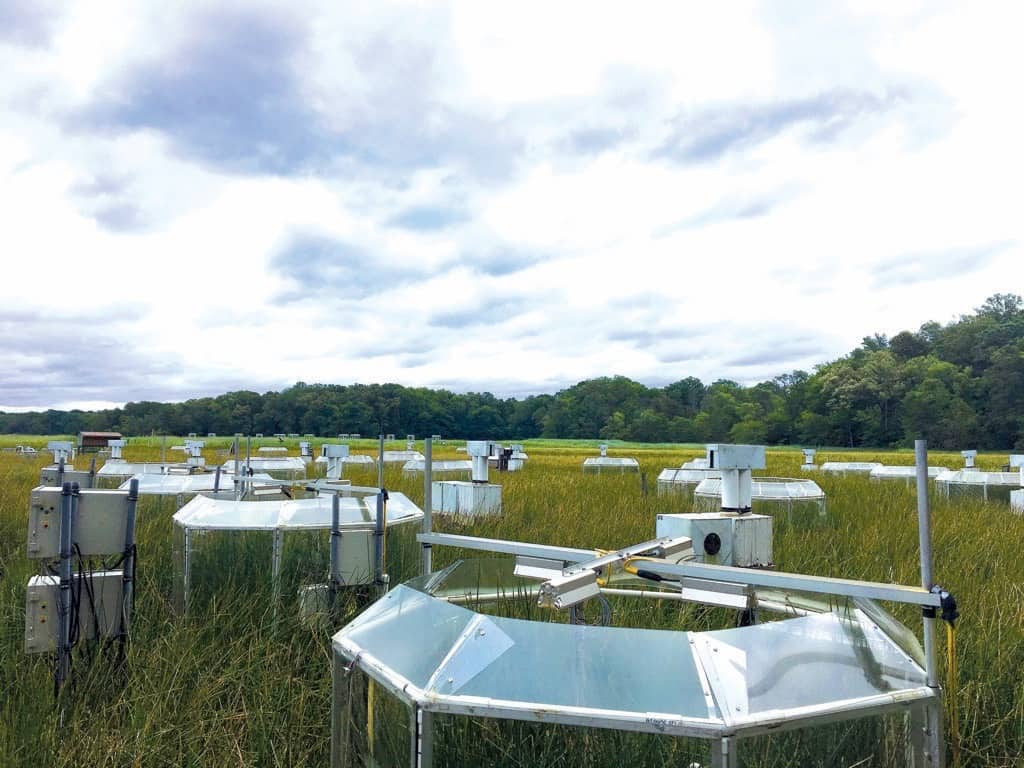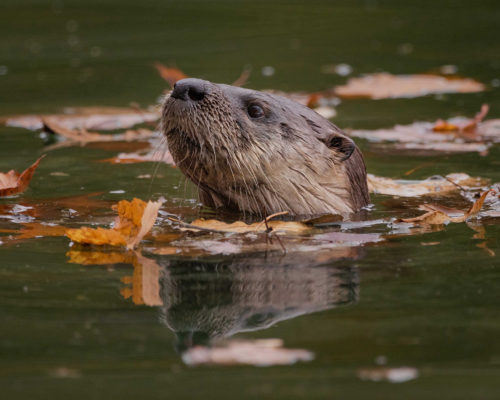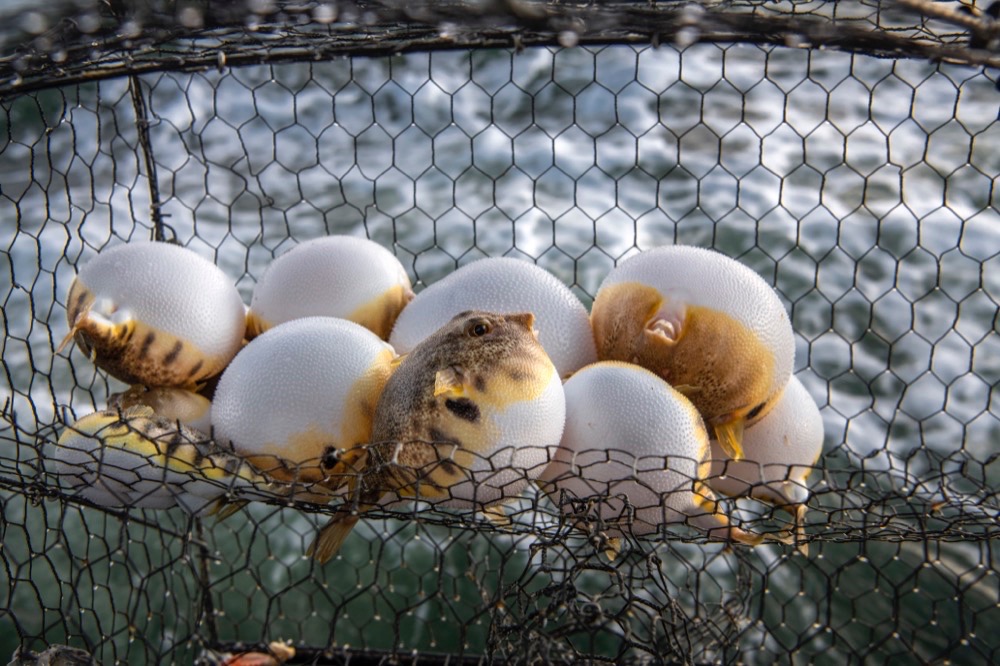Keeping tabs on the Bay’s dolphin population
For the past 33 years, Janet Mann, Ph.D., Professor of Biology & Psychology at Georgetown University studied the bottlenose dolphin population in Shark Bay, Australia.
“I’d been traveling halfway around the world for over 30 years, studying dolphins, and the day we closed on our house on the Northern Neck, there were dolphins in the backyard,” she says. Visits to her Virginia cottage, which were originally going to be a break from work, soon took on a new focus, and the Potomac-Chesapeake Dolphin Project was born.
After rounding up funding, a boat, and cameras, the Potomac-Chesapeake Dolphin Project launched in 2015. In just 14 initial days on the water, the team identified 193 dolphins (including 27 mother-calf pairs) in a 37 square kilometer area, an extremely high density compared to the Shark Bay observations, which has one of the highest bottlenose dolphin densities in the world. The mouth of the Potomac had more than twice as many as the same sized area in Shark Bay.
Chesapeake and Potomac dolphin populations had been the least studied on the Atlantic Seaboard. Adding some urgency to that study, a 2013 outbreak of cetacean morbillivirus on the Mid-Atlantic coast that killed thousands of dolphins was thought to have started in the Chesapeake. By studying the southward spread of the virus, scientists hope to understand migration patterns and interactions between populations.
Two hundred dolphins were identified the first year, 500 the next year, and now, over 1,200 have been sighted. Dolphins are identified by their unique dorsal fins—various shapes, knicks, notches, scars and pigment help identify the individuals. The researchers name the dolphins after “significant environmental, political, and social leaders since we’re in such a rich historical area,” Mann says. The roster includes such notable Americans as Ben Franklin, Grover Cleveland, Alexandria Ocasio-Cortez, Woodrow Wilson, Betsy Ross, Samuel Adams, John Jay, Nancy Pelosi, Aaron Burr, Madeline Albright, Frederick Douglass, Abraham Lincoln, JFK, Mamie Eisenhower, Hillary Clinton, Standing Bear, and Megan Rapino.
Dolphin society is complex, and they change group memberships often. Throughout the day, a dolphin may travel alone, in pairs, or in various-sized pods. Mann and her research crew in Australia found that dolphins may change who they are swimming with as often as six times an hour. Group memberships and the circumstances that lead to them sometimes create strong bonds. “This can lead to some funny, bipartisan affiliations,” Mann says. “Dolphins Joe Biden and Newt Gingrich are often seen together, and G.W. Bush, Jimmy Carter, and Zachary Taylor seem to hang out a lot.”
The Potomac-Chesapeake Dolphin Project contributes and compares data and images of dorsal fins with other scientists up and down the Atlantic Seaboard through a central database of dorsal fin images (OBIS-SEAMAP). With the dolphins identified, scientists can determine where the dolphins are coming from and going to. According to Mann, they’re in the Chesapeake and Potomac about six months out of the year. The University of Maryland Center for Environmental Science Chesapeake Biological Laboratory’s Dr. Helen Baily collaborates with the Potomac-Chesapeake program through the lab’s largely crowd-sourced Chesapeake Dolphin Watch effort, which attracts bay-wide sighting information from boaters through a smart-phone app—chesapeakdolphinwatch.org.
With over 1,200 dolphins identified, and the Potomac-Chesapeake Dolphin Project still relatively young, it will be interesting to see what new knowledge will be found. In Australia, Mann and her research crew found diverse foraging techniques in the Shark Bay dolphin population. One unique method is sponging, only seen in Shark Bay, and even there, in only about four percent of the population. In this activity, a dolphin uses a sea sponge as a tool by using a conical sponge on its beak as protection from the rough sea floor substrate while searching for fish. The sponging method of hunting is primarily handed down from mother to daughter, and Mann has witnessed four generations using it. She saw the dolphin Demi get a sponge when she was two and still nursing. Now Demi’s grandchildren are sponging.
Foraging traditions go by family. Other dolphin families in the Shark Bay studies use the beaching method whereby forage fish are herded to the water’s edge where the dolphins will swim onto the beach to catch them, risking becoming stranded.
On August 17 last year near the mouth of the Potomac, Mann’s research crew witnessed an apparent dolphin birth, something that has only been documented once before, anywhere. Graduate student Ann-Marie Jacoby noticed pools of blood in the water. She and the crew went to investigate, and a tiny dolphin calf popped up. The mother was named Patsy Mink after the first non-Caucasian U.S. congresswoman, so they named the calf after her daughter Gwendolyn. Later that day, Patsy and Gwendolyn swam by Mann’s backyard, and she saw them together again in October.
The Potomac-Chesapeake Dolphin Project maintains an identification library of images at pcdolphinproject.org where you can check to see if a dolphin you have seen is on the list. If you spot a dolphin and you are close enough to take a photograph without disturbing the animal, please email the location, time, activity information, and images to pcdolphinproject@gmail.com. Or, even better, join the Chesapeake Dolphin Watch—chesapeakedolphinwatch.org.




